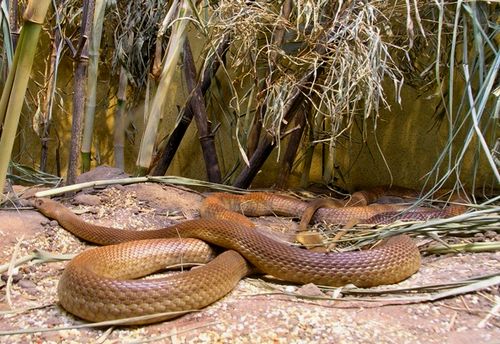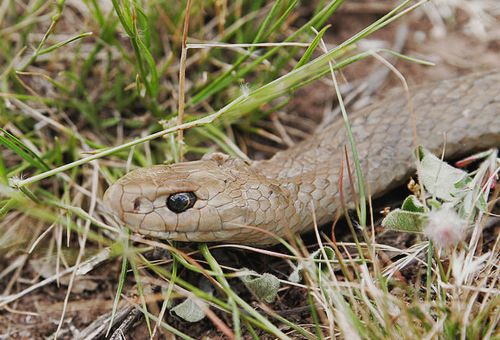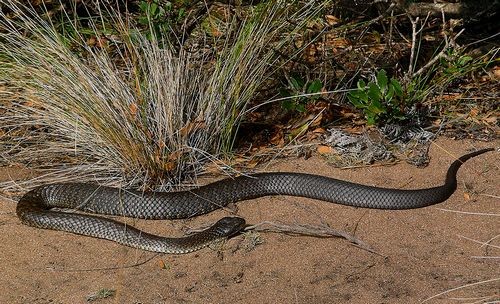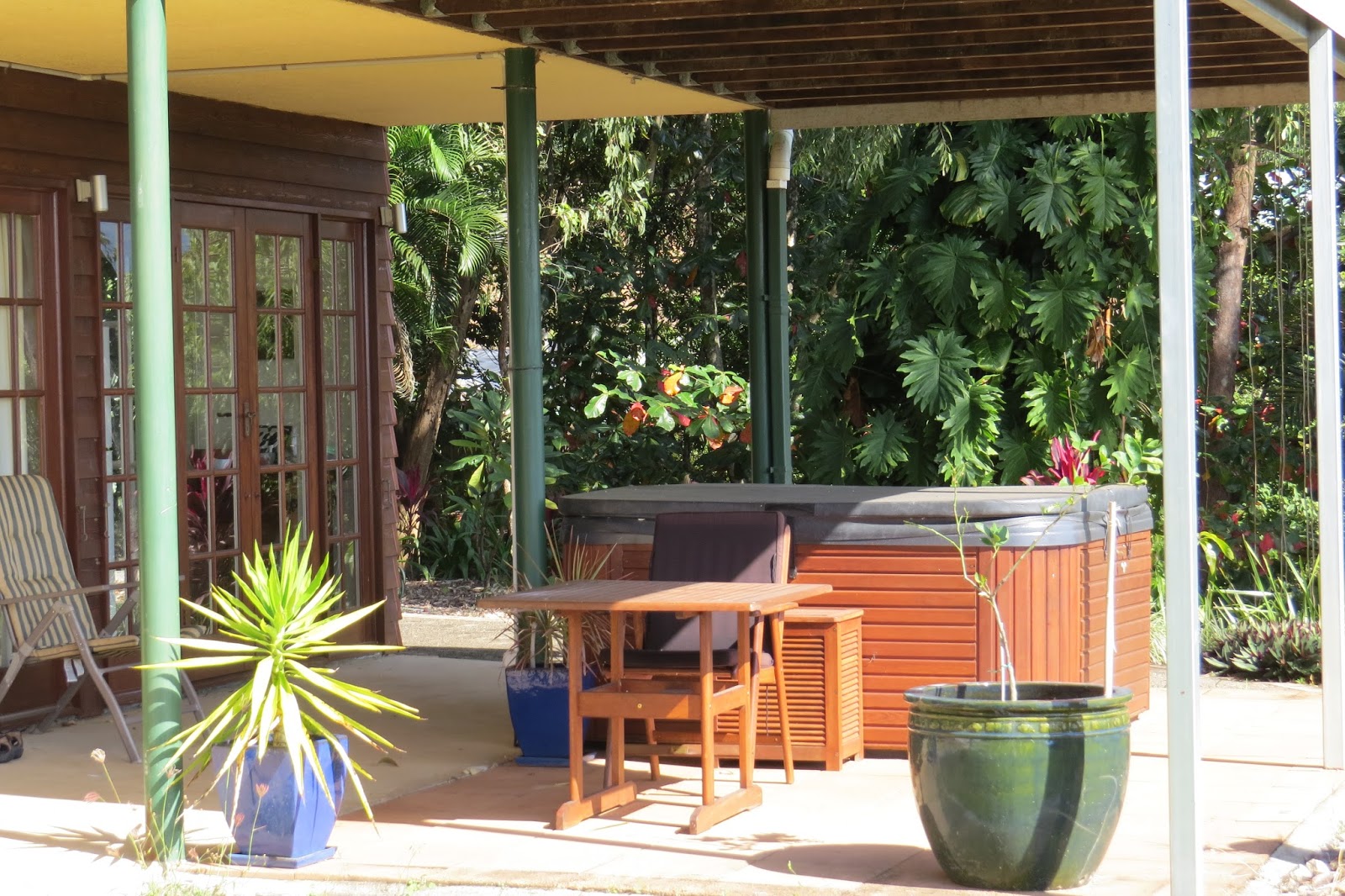 |
| Parasitic plants growing on trees are a fascinating way nature provides for a plant that must “borrow” nutrients from thriving trees of many varieties. |
What a pleasing response we had yesterday after our post concerning some negative comments from a reader. We hope the many responses we received in the past 24 hours indicate a general consensus among our readers.
 |
| This is where we park the little red rental car. The door to enter our property is slight to the right of the red car. Since we’re on ground level we have a full wall of windows overlooking the Coral Sea and the beauty of Trinity beach. Andy and Sylvie have two cars, one of which is their sports car shown here. The open stairway to the right is access to their property above us. (For security purposes I edited the photo removing the license plates). |
If you’d like to read some of those comments, please check the end of yesterday’s post by scrolling down this page, bearing in mind that many readers prefer to remain more anonymous, preferring to send an email. Either method of communicating with us is appreciated.
 |
| Each day more and more of the leaves on these leaves turns orange. Although it’s winter now, the weather in Queensland is never cold enough for a feeling of a full fall season. |
If at any time, you’d like to express an opinion or comment and prefer to do so privately, our email links are listed above the feature photo of the two of us at right top of the page. You can count on a response within 12 hours with the exception of our travel days.
 |
| In the US, we had houseplants of this type called Pothos, which were hearty plants that did well without much sunlight and only occasional watering. |
Speaking of travel days, a few more are rapidly approaching. In a mere 17 days, we’ll be departing our comfy cocoon here in Trinity Beach to head for an overnight in Sydney, although we’ll be arriving in and out in the dark at 8 or 9 pm and flying out at 6 am with no time to revel in the beautiful city as we did when we arrived on June 11th. Click here to see our photos of Sydney.
We aren’t disappointed to be unable to spend time in Sydney this time since, over the next 20 months, we’ll be back in Sydney seven more times! Surely, we’ll be able to see the city in more detail during a few of those between-cruises-overnight visits. Sydney is quite an exciting city and although we aren’t big city enthusiasts for the long term, it’s fun to see a big city in shorter stops.
 |
| Another tree similar to a houseplant growing on the trunk of a large tree, although the tree itself is of a different variety. |
When our ship arrived in the Sydney Harbour early that morning of our arrival, we couldn’t get outside quickly enough. It was a breathtaking experience and most certainly, we won’t be able to resist posting more photos each of these upcoming seven times, the exception being this extra short eighth visit in a few weeks.
We weren’t able to get a direct flight to Vanua Levu, Fiji without waiting for many hours at a tiny airport on the mainland of Fiji. Instead, we chose the overnight, albeit short, stay in a hotel in Sydney, located at the airport. We’ve found it less stressful and exhausting to try to sleep for a few hours in a hotel than try to sleep in a chair at the airport.
 |
| We spotted these red plants in Hawaii on all four islands called Ti Plants. From our loyal reader, Annie: “Cordyline fruticosa probably was native originally to SE Asia and Papua New Guinea, but was carried throughout much of the Pacific by early Polynesians who used the starchy rhizomes for food. Today ti occurs in eastern Australia and on many of the larger islands in the tropical Pacific, including the Hawaiian Islands. They seem to thrive in tropical climates.” Thanks, Annie for the update! |
We recall our intentions in our travels: ease, joy, and simplicity, a part of our logo which should have included “low stress.” With all the most organized of plans, events may occur beyond our control. If the areas over which we have control are seamless, the unforeseen event will be more manageable.
With upcoming plans to live in Bali beginning on April 30, 2016, we’ve stayed apprised of the numerous issues regarding canceled flights to and from Bali as a result of the continually erupting volcano, Mount Raung. These frequent eruptions have grounded all flights on countless occasions.
 |
| We don’t recognize this plant with leaves green on one side, burgundy on the back of the leaf. |
Should this occur when we travel to Bali, rather than spending days waiting at the airport, we’d prefer to get a hotel room wherever we may be and wait it out enjoying our time until we can board a flight avoiding feelings of stress and worry.
That’s a luxury we’ve afforded, not due to willingness to spend the money but, more of a desire for stress avoidance which for us becomes a vital aspect of our health and well-being. Sure, there’s a price to pay for that option but we’ve budgeted for such occasions and don’t flinch when the necessity arises.
 |
| These sparse trees will be in full bloom once winter is over. |
As we continue the remaining time in Trinity Beach, we’ve decided we prefer to continue to visit local sites as opposed to expensive boat trips or overnight mountain excursions. To date, we’ve seen quite a bit of the general area and would like to save a few activities for the future return to Cairns by cruise, hopefully planning an outing with other cruisers we meet aboard the ship or on cruisecritic.com.
It’s Friday here, Thursday for many parts of the world. Whatever day it is for you, may it be an excellent day that finds you well and content.
 |
| Seeing this favorite photo again this morning made us smile when one year ago we visited Highclere Castle, the subject of the well-loved British TV series, Downton Abbey. Although no interior photos of the exterior were allowed with the owners still in occupancy, we took many photos of the gardens and exterior which can be found here. Tomorrow, in our one-year-ago photo, we’ll be sharing a photo and link of the quaint Bampton, the village where the in-town footage was filmed. Charming! |






































































































